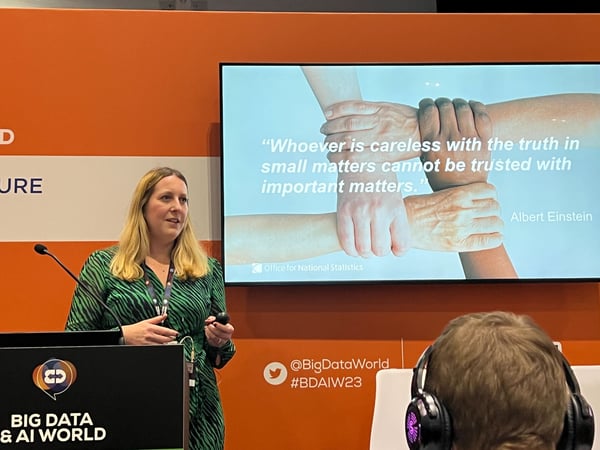Five ways government can benefit from graph databases
Governments around the world already use graph technology to fight crime, prevent terrorism, identify fraudulent activity, improve fiscal responsibility and provide transparency to their citizens.
Today government agencies and departments are beset by increasingly complex challenges of understanding more diverse information, across more interconnected and ever shifting political landscapes. Technology solutions today must overcome and go beyond the challenges of just providing access to information to harness the power of the connections in data.
A graph database platform reveals data connectedness, allowing organisations to make sense of obscured and divergent data. Unlike traditional relational databases, which store data in tables, graph databases allow information to be seen in a more flexible and intuitive way. It allows organisations to define a data model that uses ‘nodes’ to represent entities or objects, and ‘edges’ to represent the relationships between them.
Graph databases can identify patterns of behaviour and manage complex relationships between data; an infinitely more relevant approach in this ever more connected world, allowing organisations to overcome challenges with data that more traditional technologies and methodologies have previously struggled to do.
Graph database and analytics leader Neo4j has published a new whitepaper outlining five key ways government agencies can benefit from graph databases.
Perform complex queries
Graph databases can perform complex queries on large datasets more quickly than other types of databases. This is because graph databases are optimised for traversing relationships between nodes, which can be faster than traditional SQL queries.
“Governments today are challenged with solving complex problems. With the vast amount of data they have pouring in, the answers exist somewhere – but only if you can make sense of the growing volume, variety and interrelationships of data in disparate sources,” Neo4j said.
Graph databases also provide deeper contextual meaning in the data, allowing government organisations to execute on bigger and better ideas.
Reduce infrastructure costs
Graph databases can reduce infrastructure spending by delivering complex queries with less hardware and resources - a major draw for governments facing budgetary constraints.
Neo4j requires fewer licences - further reducing database costs - and offers deployment flexibility, with servers on premises or in the cloud.
Maximise value from existing resources
By integrating data from multiple sources more easily, graph databases can enable government organisations to better leverage existing resources. By connecting data from different systems and sources, organisations can gain new insights and make more informed decisions.
It also allows for better data visualisation by helping organisations to create complex data in a more intuitive way.
“Neo4j leverages the value of all your existing systems. And when it’s time to replace ageing applications, government contractors and agencies find that Neo4j is a cost-effective agile foundation for new initiatives," the paper states.
Deliver immediate answers at scale
By providing a more comprehensive view of data, graph databases can enable better informed decision-making. This is particularly important when government agencies need to make decisions quickly and accurately.
Neo4j is able to deliver a 1,000x performance advantage over relational and other NoSQL databases hosting graph engines. This can reduce response times from minutes to milliseconds for queries of graphs containing billions of connections.
Meet security demands
Graph databases can provide enhanced security features, such as access control and encryption. This is particularly important for government agencies that handle sensitive information, such as personal data, classified information, and financial records.
Neo4j said it is able to meet these stringent security demands. It is approved to run in a classified environment by many Department of Defense and Intelligence Community agencies. Authority to Operate (AO) has been granted for several applications that are built on Neo4j running on classified networks.
To read the full whitepaper click here.






